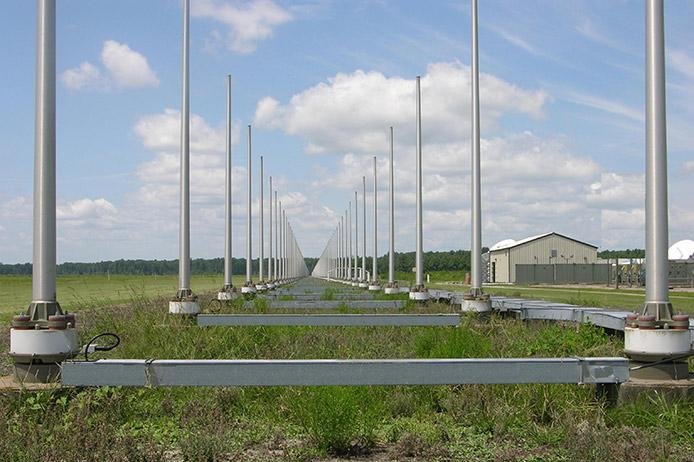The United States has begun work on the deployment of a new long-range over-the-horizon radar system for the United States Air Force, which will be placed on the Pacific island of Palau.
The sensor station, known as the Tactical Mobile Over-the-Horizon Radar, or TACMOR, will be set up on the highly strategic island of Palau. The sensor station intends to improve the situational awareness of US and allied forces operating in the region in the air and maritime domain.
The Department of Defense announced on December 28 that it had granted Gilbane’s Federal business a $118.4 million contract to develop the structural foundation of a new US Air Force radar station to be built in the Republic of Palau.
Gilbane Federal will build reinforced concrete pads and other foundational components as part of the firm-fixed-price contract to set up the Tactical Mobile Over-the-Horizon Radar system, the Department of Defense said.
The Naval Facilities Engineering Systems Command Pacific acts as the contracting activity for what is known as the TACMOR infrastructure project. The work is anticipated to be finished by June 2026.
According to a solicitation notice issued in May, the project involves the development of utilities to support transmission and receiver antennas for research purposes. The contract excludes TACMOR equipment, which includes the research antenna suite, calibration devices, and a marine surveillance platform.

Over-the-horizon (OTH) radars are radar systems that can locate highly distant targets beyond the range limit of conventional radars.
They operate in the HF frequency band of 5 to 30 MHz and can detect objects hundreds to thousands of kilometers away. These radars employ powerful radio signals transmitted by a big antenna or an array of antennas.
Similarly, using a high-frequency sounder antenna and a backscatter sounder, TACMOR will transmit high-frequency, over-the-horizon flight information. The system will also complement another air and maritime domain awareness radar station in Palau, which was announced in 2017.
The data gathered by TACMOR will be forwarded to an off-site operations control center via a secure, undisclosed receiver site. The control center can access real-time target tracking and extraction data to support combatant command tasks.
The National Air and Space Intelligence Center for post-event analysis can also access the data. Over-the-horizon radar (OTHR) was frequently used during the Cold Conflict, particularly as a component of early warning ecosystems. However, they began to lose relevance for some applications after the war ended.
Nevertheless, large static systems have lately regained popularity due to significant geopolitical shifts, advances in computer power, and the value proposition they represent.
Over-The-Horizon Radar On Palau
A modern OTHR on Palau can support space-based and terrestrial sensor and weapon systems. The system will likely function to cue and provide early warning of approaching ballistic, cruise, and hypersonic weapons as well as enemy ships, aircraft, and ships.
In particular, OTHR makes it possible to continuously monitor certain areas without deploying numerous types of radar systems over an extensive area at any given time on the ground, in the air, or at sea.
TACMOR will be positioned in the Republic of Palau and will be one-fourth the size of a conventional OTHR, according to the Air Force’s budget justification documents for the fiscal year 2023. Its goal is to improve situational awareness of activity in the air and on the sea.
The system’s development, testing, and acquisition, together with the addition of related components, will give warfighters the capacity to fill in surveillance coverage gaps in crucial Pacific regions of significance to the United States and our Allies, the document reads.
The TACMOR program began in July 2017 as a previously funded Joint Capability Technology Demonstration (JCTD) with the Air Force.
JCTDs are intended to study and analyze the military utility of new technology, as well as identify its system integrity and where it will fit perfectly among operations. Since then, TACMOR has completed this process and moved to a program of record with the service.
The Air Force intends to continue building and installing TACMOR’s communications infrastructure in 2023. The efforts will develop the information required to start the Initial Operational Test and Evaluation (IOT&E) procedure and eventually complete the guidelines for particular contractor deliverables in support of IOT&E.
The development of TACMOR only highlights the growing significance that the Pentagon has recently given to maintaining a constant American military presence in the Indo-Pacific.
The long-range radar is another signal of increasing US alertness in the Pacific. All in all, the system could be crucial for monitoring Chinese and North Korea’s activities.
- Contact the author at ashishmichel(at)gmail.com
- Follow EurAsian Times on Google News




